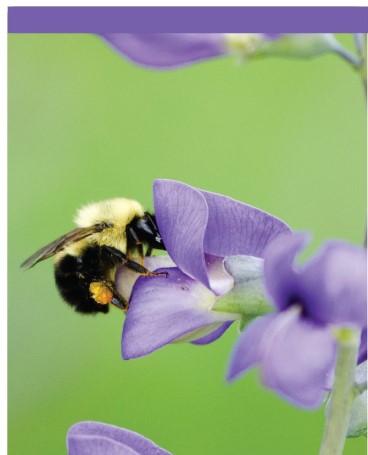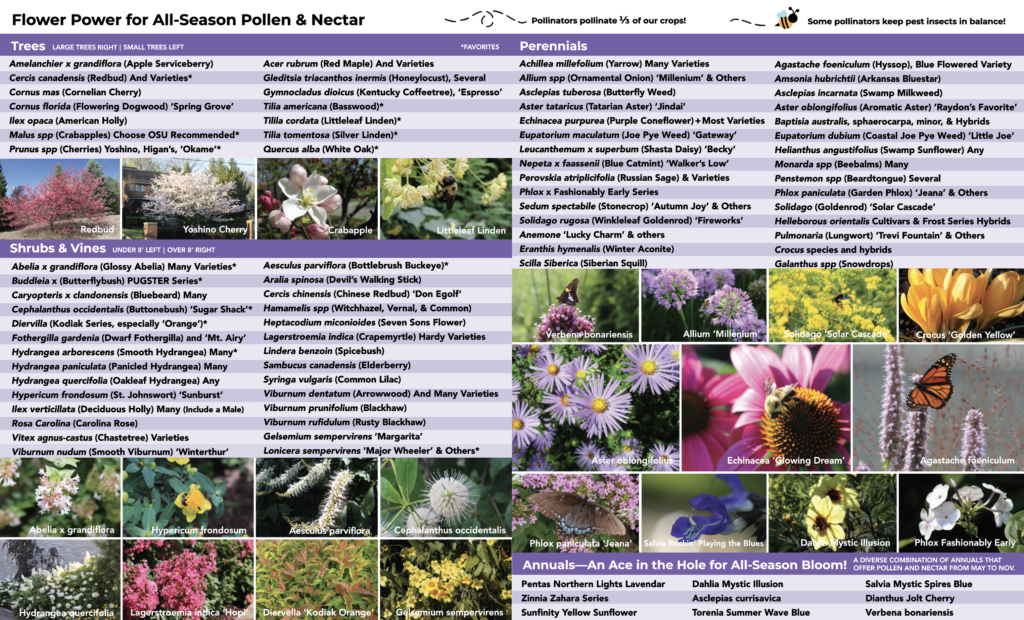Planting Recommendations from Our Experts
The plants in the Recommended Lists from the Botanical Garden at the Cincinnati Zoo come from trials and usage in the urban/suburban, Midwest conditions of Zoo grounds and also from extensive observations of plants in public gardens and private gardens from around the region. We are very confident that usage of these plants in ordinary garden situations will result in good success, provided they are properly sited, planted, and maintained. Results of its extensive plant trialing program are shared with industry and gardening groups through a wide variety of channels.

Recommended Plants
Including plants in gardens to host insects is just as important as providing pollen and nectar. Without host plants in the landscape, butterflies and moths have nowhere to rear their young. Sometimes, a single plant species hosts a single insect species, as is the case with monarchs and milkweed. Other plants, however, can serve as host to multiple insect species, and vice versa.
These associations have evolved over millions of years, and almost always occur between native plants and butterflies. The increased use of land for farming and development and the spread of invasive exotic plants have diminished the diversity and populations of native plants. This has put a tremendous amount of pressure on pollinators. By including host plants in your garden, you will provide the means for generations of butterflies and moths.
Flowering perennials that return year after year are great plants for pollinators. The primary importance of perennials is to provide nectar and pollen, though some are also good host plants. Most perennials bloom for short periods of time so it’s a good idea to include perennials that bloom at different times during the season in your garden.
The importance of continuous bloom is where annuals, which live for just one year, come in. Designing with perennials alone can leave a gardener struggling for constant bloom. Good nectar-providing annuals can assure food for pollinators from May to a hard frost, and they are heavy bloomers. Moreover, annuals can be planted in places other plants can’t go like containers, baskets, and window boxes. With annuals, any patio, balcony, windowsill, or courtyard can become pollinator habitat.
Woody plants are the true multi-taskers of the garden. They provide great habitat for pollinators, particularly for early foragers as they tend to bloom in early spring. Many trees and shrubs also host important butterfly and moth caterpillars.
Trees
Shrubs
Native Plants
Our Native Plant Program is the product of our long-standing interest in native flora. We are particularly focused on native plants that are valuable to horticulture. Our continuing collection of material, propagation work, and our conservation efforts with C.R.E.W, have given us many native plants to use and trial in our landscapes. Many of our gardens and exhibits, especially those associated with Eastern North American animal species, are composed entirely of native plants. The Night Hunters habitat garden is one such native garden, as is the nearby garden that surrounds the Passenger Pigeon Memorial. The woodland plantings of Wolf Woods feature many native trees, and a host of native woodland understory species below. Additionally, the Education Center rain garden is entirely native. While these gardens are exclusively native by design, native plants are liberally planted throughout the entire Zoo, often in exhibits mimicking plants of exotic lands.

Native Plant Sale Sponsor:

Tulip Display
What could be more glorious than a 100,000-bulb tulip display? Each year the Cincinnati Zoo & Botanical Garden celebrates the arrival of spring with just such a welcome. Zoo Blooms and our garden party/concerts at Tunes & Blooms are part of the spectacle.







